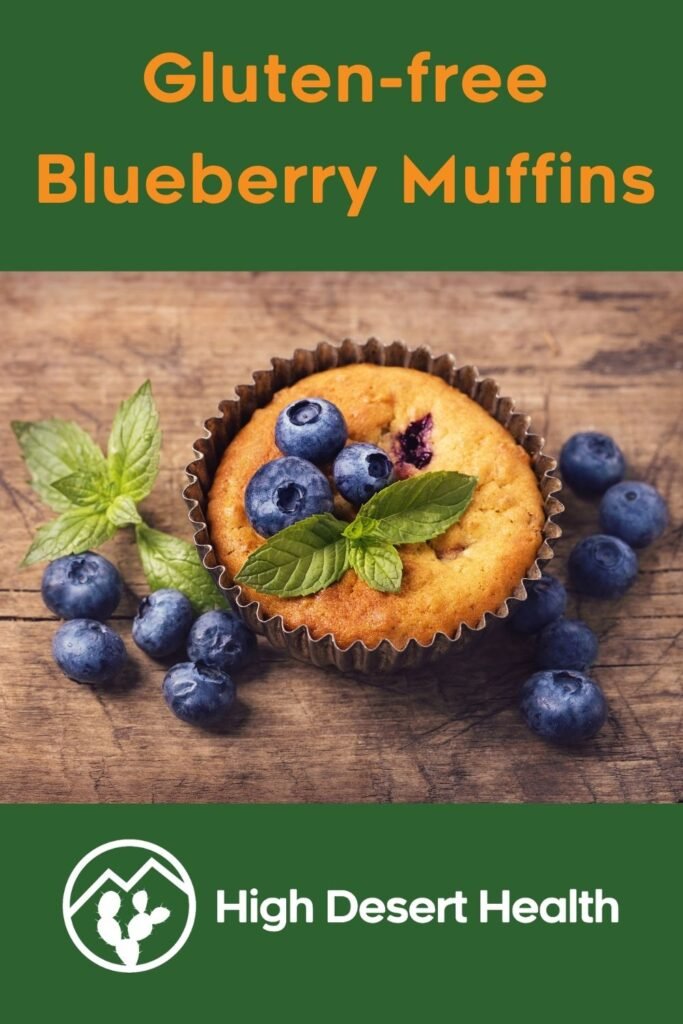
Adapted from episode 44 of The Perfect Stool podcast with Rob Vanbergen and edited for readability.
Lindsey: Tell me how you got into this work with microcurrent therapy.
Rob Vanbergen: I suppose it was a very weird situation, for me. I never intended to go into healthcare or alternative health, because I actually wanted to be an English teacher. I started going to university to study books and didn’t really enjoy that too much. I moved on to anthropology and didn’t really like that, then moved on to business. I ended up working in the family business, doing accounting and things like that. But while working in the office, I was seeing my parents treat all these patients, then 30 minutes of treatment later, whatever was bothering them was bothering them less, and many of them were fixed.
When I was a kid, I was a patient first because I had really bad scoliosis. Nothing we could do would fix that, which caused a lot of anxiety for me. So I had a personal healing experience with microcurrent therapy, because my parents first brought microcurrent therapy into their practice to help me. When I was a kid, I took it for granted and I didn’t really realize how great it was to no longer have that pain. It was then when I was working in the office, doing the boring number crunching, when I thought “why can I not treat people?” That was a teaching moment for me and I realized that if I wanted to treat people, I needed to get certified, have some sort of credential, and I needed to be insured. There’s so much that goes into working safely in alternative health. I decided to do all that, and then I started studying with them, because they’re the ones that really know about microcurrent. I tried to absorb everything that I could, so that I could start to teach others about it.
Lindsey: So did your scoliosis resolve or become manageable?
Rob Vanbergen: With scoliosis, we find it very easy to make a shift in one treatment session. It’s just all about treating the S curve, and mine wasn’t super severe. I’ve seen some really, really bad cases that were way worse than mine was. But it definitely resolved. Before that, we had been using homeopathy to try and manage the pain, and I’d been seeing an osteopath as well for some adjustments. Those were providing temporary fixes, from a couple of days to a week of pain relief, and then it would get worse. That was when microcurrent stepped in, and it just changed things. It realigned everything.
Lindsey: So was that microcurrent simultaneous with some type of hands on physical therapy, or was it just the microcurrent?
Rob Vanbergen: At that point, I would do a session of physiotherapy, and then we would follow up with the microcurrent right afterwards. Both my parents are naturopaths, and they continued to do the microcurrent, but they weren’t really into physical manipulation. I was seeing another therapist for that. But beyond that, it took a couple of treatments to get things to stick, and then the microcurrent. It’s all about the memory of the body and the electrical communication, and trying to make things stick
Lindsey: Right. I’ve been doing frequency specific microcurrent with my sciatica, and definitely attribute the combination of the physical therapy and the microcurrent to my pretty good state of healing at the moment.
Rob Vanbergen: Oh, absolutely. I think what we see when we’re using microcurrent is that some people that just love to stick some pads on their bodies and run the treatment passively. My preferred method is to add in movement while stimulating it, it’s much more effective than just sitting there charging yourself up with sticky pads on. As you said, it’s that physical movement that makes the difference there.
Lindsey: So now that we’ve been discussing it, what is microcurrent therapy? How does it compare to modalities like TENS, transcutaneous electrical nerve stimulation, or EMS, electrical muscle stimulation?
Rob Vanbergen: In order to understand microcurrent, I ask people to imagine that their bodies are electric, that cells communicate through these electrical signals that pass along to each other, kind of like skipping a stone. Now, in order for the brain to send a signal to the body and ask it to do something, like turn off inflammation or trigger healing, it needs to be able to communicate. To do that, it uses these little microcurrent signals and sends them down the nerve pathways. With microcurrent therapy, what we’re doing is using frequencies like the brain uses and hacking into the body like hacking a computer. You’re asking the body and the brain to work on the issue, because we want them to do the healing. We’re taking control of our body’s own amazing ability to heal and triggering it through microcurrent therapy. The main question we ask is if your body was biologically designed to heal, why are you not healing? A communication breakdown can be the problem there.
There’s definitely a big difference between TENS devices, EMS devices, and microcurrent. TENS devices are about 1000 times stronger than microcurrent therapy, even at the highest frequency. With TENS devices, we’re paralyzing nerve pathways so that we block pain, kind of like electric Tylenol. Typically, TENS devices don’t have long lasting effects, and there’s risk if you do it in the wrong place. For example, you can’t treat your neck, you shouldn’t treat your chest, and there are all these different warnings because of how high the voltage is. There’s some concern over triggering muscle spasms or damaging nerves.
I see EMS promoted more for exercise than anything else. EMS is a series of high frequency pulsed electrical signals to exercise and move the muscles in the body. They’re very popular for six pack hacks. Medically, we do see them in rehab facilities as well and they can be very close to microcurrent. In fact, our professional devices can actually be used for electrical muscle stimulation.
To cycle back to microcurrent, we’re not doing anything unnatural, aside from the fact that we’re taking control of the body. We’re asking the body to turn off inflammation, trigger repair, and normalize the system. That’s why a microcurrent treatment with our equipment tends to only be five to fifteen minutes, with the goal of then letting the body and the brain do some work.
Lindsey: So you’re using the currents that the body itself is using to communicate, whereas something like a TENS unit is so many thousands of times more powerful that it just hammers the body and it’s not in any way communicating with the body in a natural way.
Rob Vanbergen: Yeah. TENS devices are not what we would consider body friendly. As an example, 7 hertz is the frequency that seems to trigger regeneration of bone, so that’s what we go to when we’re dealing with broken bones, and soft tissue is 90. So we look at what the body responds to that is also body friendly, and we use that on the area and get the problem resolved.
Lindsey: Got it. Let’s get to the gut. What gut conditions have you seen microcurrent therapy work on?
Rob Vanbergen: Quite a lot. Recently, we’ve seen a big surge of people that have a lot of gut issues due to adhesions from massive surgeries, for example C-sections, which then triggers issues like Crohn’s or IBD. I definitely want to emphasize the scar tissue, but I’ve seen Crohn’s disease, ulcerative colitis, IBD, constipation, and even diarrhea benefit greatly from microcurrent.
Lindsey: Wow. Are there any peer reviewed published studies of microcurrent therapy and gut conditions?
Rob Vanbergen: There are a few published studies that have been done on Crohn’s specifically with vagus nerve stimulation. In that case, what they’re doing is using a surgical implant with a battery directly on your vagus nerve. Originally, they started doing those studies for epilepsy, and then noticed that people’s gut issues were calming down. Most of the studies we’re doing both at Stanford University and Baylor University right now are focusing on blood flow enhancement and wound healing. We haven’t launched any studies with our own devices on gut health yet, but I’m writing my PhD currently, and I’m doing my thesis on vagus nerve stimulation, along with inflammation in the gut and the body. I’ve found around 20 case studies involving different inflammatory issues in the gut that are causing diarrhea, usually manifesting as IBS.
Lindsey: Are these all people who have come through your practice?
Rob Vanbergen: They’re from either my practice or the practices of some of the people I’ve trained. We’ve got a good sample from across the world. We have cases from Australia, the US, the UK, and from Canada.
Lindsey: So how exactly does microcurrent function to change conditions in the gut to heal those conditions?
Rob Vanbergen: Inflammation causes a huge amount of problems, and when you’re dealing with chronic inflammation, chronic gut issues, you can be quite bloated and swollen, experiencing pain and discomfort. The inflammation is not meant to be there. It is an overreaction to something, and it’s not doing you much good. The only situation where I would say that inflammation is beneficial, is in the very early stages of the development of an ulcer, because it’s trying to help your body. If you imagine the brain sending that signal to your gut, asking for inflammation because there’s something going on. What you would hope is that things would settle down in a day or two, and the brain would turn the signal off and put the fire out. What seems to happen in chronic conditions is that the fire doesn’t get put out and it’s almost like the brain started a fire in a room, closed the door, and then forgot about it. Long-term inflammation will eventually cause degeneration, because if the fire isn’t put out, the stuff in the room is going to get burnt and it’s not going to be useful anymore. When you’re dealing with chronic inflammation in the gut, I see a lot of people with chronic diarrhea, very easily upset stomachs, who can’t eat a lot of foods anymore. Some people can barely keep down water. This becomes an issue because it starts to interfere with their lives. I’m sure your readers can resonate in that way. As a person that used to experience anxiety that would trigger an upset stomach, I know how impactful that can be on a day-to-day basis. With microcurrent, we have that potential to turn off inflammation. To fix the systemic problem, we focus on stimulating the vagus nerve, which can be accessed through the left side. We do a three minute gentle stimulation on the neck to send signals of calming to the brain and the gut to ask it to turn off inflammation. The quickest turnaround I’ve seen was just before Christmas, where I had a lady that purchased a device who had chronic IBS for years, and within four days of doing vagus nerve stimulation four times a day, she had her first normal bowel movement in years. Getting that vagus nerve stimulation to turn off the inflammation is key to shutting off the inflammatory response, reducing pain, and regulating the bowels as well.
Lindsey: I get that it could reduce inflammation and maybe even get the vagus nerve to reduce inflammation, but what I’m wondering is what caused the inflammation in the first place? Once you take out the microcurrent, won’t that same thing cause inflammation again?
Rob Vanbergen: It can, and this is where we try to determine what else is going on. Part of what we do involves the Haché protocol, which involves looking beyond microcurrent at stress, nutrition, fitness, and sleep. Obviously, the microcurrent plays a major role. What I see quite often is that people dealing with these chronic conditions have an overgrowth of candida, which is something we have to address as well. We potentially even have to look for other digestive organ dysfunctions, such as liver dysfunction. We absolutely have to look at the bigger picture. If someone’s not sleeping, for example, then their rhythm’s not in the right place, and that might not be working properly. We can’t just say that microcurrent is going to fix it all, but it will provide relief. If the issue was just inflammation that was left on, and it can be turned off, it won’t come back.
Lindsey: I see clients with candida a good bit, too, and I’m curious, because I’m always having discussions with people about diet. It takes so long to knock out candida that asking somebody to not eat any sugar or carbs for eight months just is a little unreasonable. What kind of nutrition and diet recommendations do you have for treating candida?
Rob Vanbergen: Firstly, getting a full GI map test done so we can see the levels of the candida is helpful, so that we have some data to work with. I hate recommending specific diets, because I find that there’s no one size fits all diet. I’m a big fan of the process of elimination, so I usually tell people to look at the big triggers: dairy, gluten and sugar, but not to remove them all at once, and see what the trigger might be. I also like to get people on a good probiotic. We use a product called Biocidin. I’ve seen that totally eliminate the candida in both close family members and clients. It might take two months and some conviction to be able to give up sugar for that long, especially with how much sugar is in everything.
Lindsey: Do you use the full protocol with the Biocidin, including the Biotonic, the GI Detox and the Proflora 4R?
Rob Vanbergen: We’ve just done the GI Detox in combination with it. We go really slowly with the Biocidin. I’ve found that people tend to be really gung-ho to finish the bottle. We work through that and reccomend GI Detox when people have flare ups, and they start to have improved symptoms pretty quickly, especially with the microcurrent. It doesn’t mean that the inflammation is gone, and you feel better and can eat that chocolate bar. It’s not going to work that way.
Lindsey: So you mentioned the vagus nerve and the importance of calming the inflammation by it. I’m wondering whether there are simpler, less expensive ways to stimulate the vagus nerve like gargling or humming, or the methods that are described in Stanley Rosenberg’s book, “Accessing the Healing Power of the Vagus Nerve”?
Rob Vanbergen: We’ve had some people compare the difference between those, and I have found that nine times out of ten, you’re going to get better results from the electrical stimulation. You’re combining the alpha frequencies of being calm, and in that relaxed state, you’re able to put those in the vagus nerve and have them travel up and down it. Because it’s electrical communication, it’s hacking the body. It doesn’t require you to get into a state of mind where you can do deep breathing, gargling, humming and also calm yourself down properly. We find people get very high stress, especially with gut issues. And again, I resonate with that. It can be really hard when you start to feel discomfort to focus in the moment and bring yourself into it and the electricity just kind of takes control. It’s like an override for it.
Lindsey: You described a little bit about the physical way that the machine will stick. Can you describe what it looks like, because people might be wondering what exactly this is that they’re using?
Rob Vanbergen: It’s a handheld, battery-operated device, and it’s smaller than my iPhone. It fits into the palm of your hand pretty nicely, and it has a metal electrode on the back of it. The electrode is where the electricity comes out, and it’s gentle, tingling, nothing uncomfortable. You can also plug in various attachments, if you feel you need extra reach, or just a more comfortable tool to hold in your hand, and then the electricity would come out of those instead. You can hold it in your hand and paint it across the body. There are over 250 adjustable power levels in the device, which is always set to be comfortable for the user. That can change on a daily basis based on the electrical potential of the body. Just because 50 power was comfortable one day doesn’t mean that it will be when you’re really inflamed. You paint the device across the body and the frequency that you set is translated into an electrical charge.
Lindsey: So are you saying that people are choosing to change their frequencies?
Rob Vanbergen: We follow specific protocols with people, everyone gets their own one-on-one treatment coordinator to help them. We work through their issues as a service. So all of the frequencies are different – there’s a frequency that’s great for the vagus nerve, anything above 100 hertz is great for surface inflammation. Anything below that tends to have regenerative capabilities, so we will switch between the modes, depending on what we’re trying to achieve. It’s just one frequency at a time which is enabled by the chip technology. In our Avazzia Life Evolution, we have one which we use for the vagus nerve that moves between seven and twelve hertz over a two minute period, and then cycles through again. All these things are designed to make sure that the body doesn’t habituate itself to the frequency, so we don’t want a static frequency consistently hitting the body. Just like taking two Tylenol every four hours will eventually mean that the body stops responding to the Tylenol, doing the same thing with one frequency could have the same result. We’re making sure every frequency, every program is consistently changing to prevent habituation.
Lindsey: Okay, so the devices that they’ve been using on me use pairs of microcurrents. I’m wondering whether you’re familiar with those and how they’re different from Avazzia devices?
Rob Vanbergen: Sure. Frequency specific microcurrent usually involves hitting the body with one frequency, and then following up with another. What they tend to do with those programs is very similar to what we have here. There’s a small range, and it hits every frequency in that range. With frequency specific, they might say, use one frequency and then switch. From my understanding, it does vary based on the device. You’re trying to hit it from two different frequencies. It’s likely that they’ll have a similar program so that even if it’s a specific frequency, it will change on a decimal level to minimize the chance of habituation. Otherwise, you would find that over time, your body would just stop responding.
Lindsey: I think the lowest cost one of those devices is something around $2,500. So how does that compare to the price of your devices?
Rob Vanbergen: Our lowest cost one is about $600. My recommended one for gut issues is about $1,500. The reason I recommend that one, the Avazzia Life Evolution, is because it can do vagus nerve stimulation. You can treat gut issues with the Avazzia Life Genesis, which is the $600 model, but to work systemically on the vagus nerve, I feel it’s worth it to make that investment.
Lindsey: And people have to buy them, they can’t just rent them?
Rob Vanbergen: We don’t currently have any rentals, but some local practitioners do offer rentals. If you buy a device from us, you get 30 days from when it arrives to try it out. If you don’t like it, you can return it if it’s not working for you. During the first 60 days, you have a one-on-one treatment coordinator that will send you links to videos, they might hop on zoom with you, and they would talk you through the different treatments that you need. If you’re having any issues or you’re finding something’s not working, they’ll adjust the plan, which we find to be crucial because every patient is different and has different case histories. If we don’t work on an individual level, we might miss something that is critical to that healing.
Lindsey: How long and how often you need to use the microcurrent device in order to see some initial results? How long does complete healing take, on average?
Rob Vanbergen: I’ll preface this by saying that the longest condition to heal is colitis, especially when it’s very, very chronic. It can take three to four months to see results. But with other conditions, there’s usually benefit within the first two to three weeks. Within that first 30 days, we ask that you do twelve minutes of treatment per day at minimum. That’s four sessions of three minutes stimulating the vagus nerve per day, and if people do that alone, it will help. If they can add in another 15 minutes of general treatment on the abdomen it’s going to be even better. I would say a maximum of 30 minutes a day.
Lindsey: So the 12 minutes is on the vagus nerve?
Rob Vanbergen: Yeah, we try to mimic the studies that used the surgical implants. Those fire all the time, so we want to be hitting the nerve four times a day, usually around mealtimes and bedtime.
Lindsey: That seems like a reasonable ask.
Rob Vanbergen: Yeah, it’s not a big deal for many people. Some people have very busy lives, and that can be kind of challenging for them. But it’s your health, so it’s a very good investment of time.
Lindsey: Well, if you run to the bathroom 12 times a day, it seems like this would be a better choice! Okay, so you mentioned the $600 and the $1500 device, and you have a higher level one as well?
Rob Vanbergen: Yeah, we have one that’s intended for doctors, that’s about $4,000. I never recommend that for home users, because it’s not designed for that. The main advantage to that one is its evaluative capabilities. It has a screen on it, you put the device on the skin, and then within one second of being on the skin, it’s going to give you a reading, which will tell you whether that area has inflammation, is degenerated, or has healthy tissue based on the electrical feedback. That can help a professional determine what’s really going on. They may be able to look at your abdomen, take a bunch of readings, then maybe they go up to your liver. Maybe they see that the liver is really inflamed. They can see what is causing a cascade of issues somewhere else, which is not always necessary, but it’s a neat feature. That’s really where that extra price comes in. There’s probably an extra 45 programs in the professional device, and it can be very overwhelming for someone to essentially learn all of the material you need to make that one work for you.
Lindsey: Do you have to pay extra for the attachments?
Rob Vanbergen: Yes, and the price varies. The classic kits of both models come with some attachments. We also have a deluxe kit, which includes every attachment under the sun. For the Genesis device, that makes it $795, and that includes all the attachments you would need with that device. For the Evolution, it’s $1,995. These devices are FDA approved, and you can spend HSA and FSA accounts on it, so it doesn’t need to come out of pocket either.
Lindsey: Nice. Tell me a little bit more about the Haché protocol and how it relates to the devices. When you get the device, do you automatically get some amount of that protocol?
Rob Vanbergen: We’ve focused on that more than anything else in the last few years, because we realized that we really need to take a full holistic approach. Maybe it’s something we would be doing ourselves, but we can’t expect that every patient is doing that. People find the biggest one is stress. As a recap, there are five elements: stress, nutrition, fitness, sleep and microcurrent. We’ve had lots of people that were doing microcurrent, but maybe they weren’t managing the stress, maybe they had no support system. What’s really happening in that situation is the stress reaction is blocking healing. We mentioned nutrition earlier, and it’s very important to find out what you can and can’t eat for you. With fitness, I find that’s a word that scares a lot of people. Movement is medicine. Movement is life. If you move, if you are moving around, then you’re doing a lot of good for your body, even going for a ten to fifteen minute walk or gardening. We’re really not asking people to run marathons, we just think it’s important that people get some sort of physical exercise.
Lindsey: I know that the research says that the gut microbiome improves if you engage in exercise.
Rob Vanbergen: Yes, yeah, it’s very interesting, isn’t it? I think there must be some good bacteria that like fitness.
Lindsey: Or whatever our body releases when we do exercise. I’m one of these people who actually loves walking but not full-on aerobic exercise, but I suck it up and I do it three times a week for 20 minutes. It’s the maximum I can stand.
Rob Vanbergen: I prefer swimming. I can’t stand running anymore. I used to when I was younger. Now I can’t, but I need to do something.
Lindsey: Yeah, I actually have been swimming since the sciatica started. That was the only thing left to me because for the longest time, I couldn’t even walk. But I’ve been on hikes in the last couple months, and it’s been so wonderful. I used to hate walking uphill. But now the fact that I can walk uphill is exciting because I can do it. Now I have a body that lets me do that; what a privilege!
Rob Vanbergen: I know, and I see that with people all the time. It’s one of those things where you don’t know what you have until it’s gone. People will complain that they have to walk to the store, but then 10 years down the line, they might be wishing they could walk to the store.
Lindsey: I would say to my kids when they didn’t want to do their chores that you have an able body. If I had a body like yours right now, and I could just go and clean the floor, I would do it in a second. I’d be so happy to clean this floor. I’m not sure now that my capabilities have come back I’m that excited about cleaning the floor. At least I’m happy that when I want to I can do it.
So can someone see practitioners who already have the devices so that they don’t have to invest in the device? Or is it better to just buy one, given how frequently you need to use them?
Rob Vanbergen: That’s a really good question, and there are definitely practitioners with devices. And if someone’s looking, I do encourage them to reach out, because we have a bigger concentration of practitioners in California than anywhere else. But they are all over the place, and it’s a question of whether or not they’ve been properly trained. I wouldn’t want them to have the wrong idea of what to do. If someone wanted to reach out to me and ask, I’d be happy to recommend someone in their area. That being said, the cost of these treatments is usually quite high, anywhere from $200 to $300 an hour. The investment tends to pay for itself pretty quickly, and you can just return it if it doesn’t work. I tend to recommend that people buy it and work with our treatment coordinator, because that’s all included, to see if it makes a difference. And then you don’t have to put out as much money or travel.
Lindsey: Okay. I’m not sure if I totally got the answer whether the Haché protocol is included with the device and the treatment coordinator, or is that a separate thing?
Rob Vanbergen: Yes, it’s included, and we work with people on that level. In some situations, where we feel we can’t meet people’s needs completely, we can recommend them to see someone outside of our practice who’s more specialized. We’re not going to pretend to be experts in it all.
Lindsey: Okay, and is there a certain number of sessions that come along with the machine?
Rob Vanbergen: Right now it’s set to be unlimited. The treatment coordinator team is at people’s beck and call five days a week, so Monday through Friday, and they’ll do emails, zoom calls, phone calls. If anything needs escalating, then they come to me or my parents, and we have a meeting once a week to go over any kind of extreme cases, and make sure that we’re all staying on the same page. But it’s all included for the first 60 days.
Lindsey: And do you have specific diets that you recommend for Crohn’s and ulcerative colitis?
Rob Vanbergen: I tend to recommend people just stick to elimination. For example, I can’t eat raw greens. My mouth and gut swell really badly. So a lot of these diets wouldn’t work for me, because I couldn’t go that traditionally healthy direction. We have recommended trying to avoid nightshades, which many people may consider healthy, and that includes foods like tomatoes.
Lindsey: So basically, try eliminating gluten, dairy, sugar, and then perhaps nightshades for ten days if you have one of those IBD conditions?
Rob Vanbergen: Yeah, and then see how you feel. There should be some improvement when you’ve knocked the food out for ten days. Keep an eye on those ingredient lists, because a lot of processed foods have hidden ingredients you wouldn’t imagine.
Lindsey: I would imagine! Beyond the 60 days, if you still need some support, how does that work?
Rob Vanbergen: Beyond the 60 days, if you still need support, we have a membership option. It’s $48 a month, and that includes the unlimited support feature of the treatment coordinators and unlimited access to videos. It’s just our way of affording to pay the treatment coordinator team.
Lindsey: So is this something that doctors may have heard of? If people want to go to the doctor and say, I want to get this? Or should they just go straight to you, because the doctor is going to go, “what the heck is that?”
Rob Vanbergen: Some doctors might know. I found that in Europe, microcurrent is much more prevalent. If anyone has a naturopath, they will probably know about microcurrent. But the devices are FDA cleared and Health Canada cleared for pain and inflammation. They’re not necessarily going to think you should use this for your gut. Now, that’s where I recommend people give me a call, and we’ll book an appointment for that. I can answer those questions for them. If they want me to speak to their doctor, I’ve done that before as well.
Lindsey: Okay. So I have to ask, since I have sciatica, how successful are the machines in treating sciatica?
Rob Vanbergen: It’s quite successful. To treat sciatica, what we do is we work with movement on the lower back where the nerve is pinched, and we would place the electrode on the side of the spine near that and brush out with an anti-inflammatory frequency with the goal of helping to pull and release. Then there’s the memory component of the brain recognizing the problem, remembering that and not snapping it back into place. We definitely have a simple sciatica protocol, and you would need one of our wire electrode attachments to be able to actually reach your own back in that way. Hand holding the device like that will be kind of uncomfortable.
Lindsey: Okay, great. Well, I think that was a lot of information that would be useful to people who are dealing with gut issues that they can’t seem to find a solution for. Tell me where people can find you.
Rob Vanbergen: I recommend people go and check out our website. If they’re looking for some case studies that we’ve done on Crohn’s, they can go to the blog, and they can search anything gut health. And of course, from that website, if they want to speak with me directly, they can book a complimentary consultation, and I’ll give them a call and we’ll just have a chat.
Lindsey: Okay, great. I just set up an affiliate account. If you use my link from the affiliate account, and buy something, that would support the podcast. Okay, well, thanks so much for all this interesting information. This is a totally new modality for my blog and podcast, and I imagine for a lot of my listeners and readers.
Rob Vanbergen: Awesome. Well, I was really glad to be here, and thanks for having me.
If you want more help with your gut, autoimmune or other health issues, you can set up a free, 30-minute Breakthrough Session with me (Lindsey) to share what you’ve been going through and decide whether my 5-appointment gut health coaching program or a longer program for autoimmunity or weight loss is a good fit for you. Individual 1-hour consultations may be scheduled directly here.











